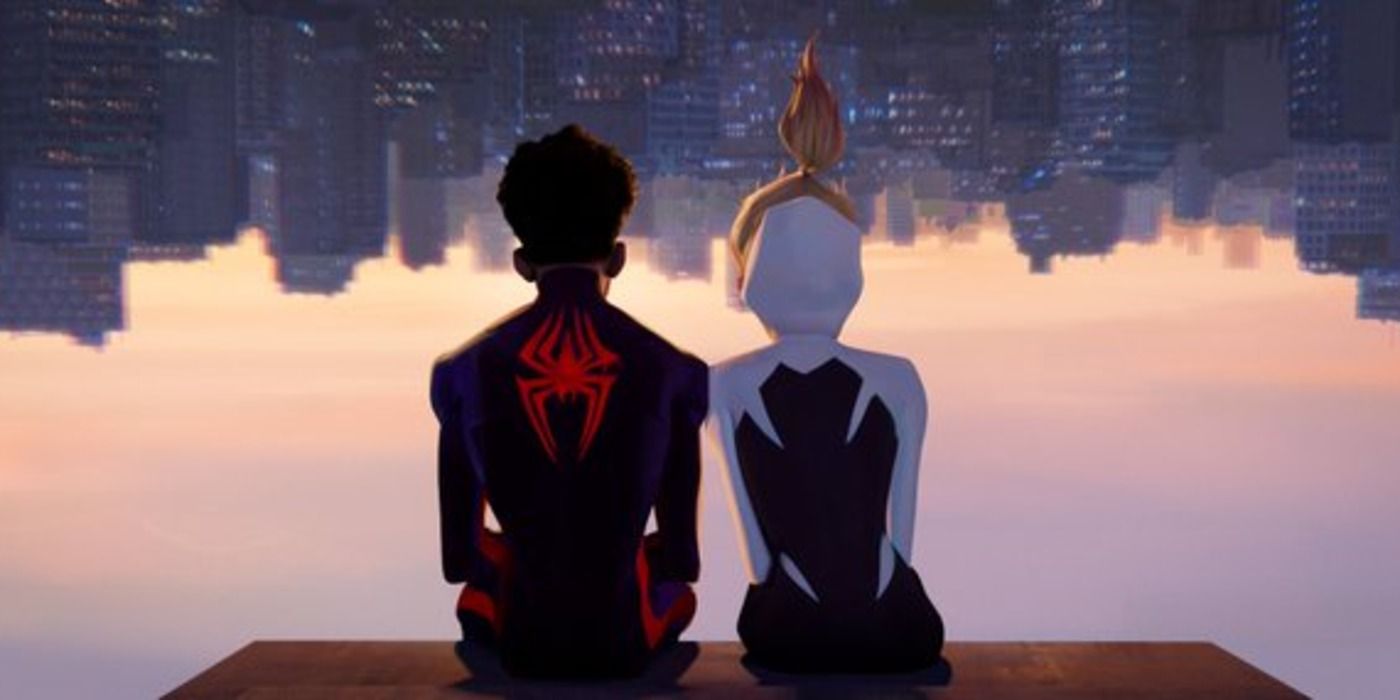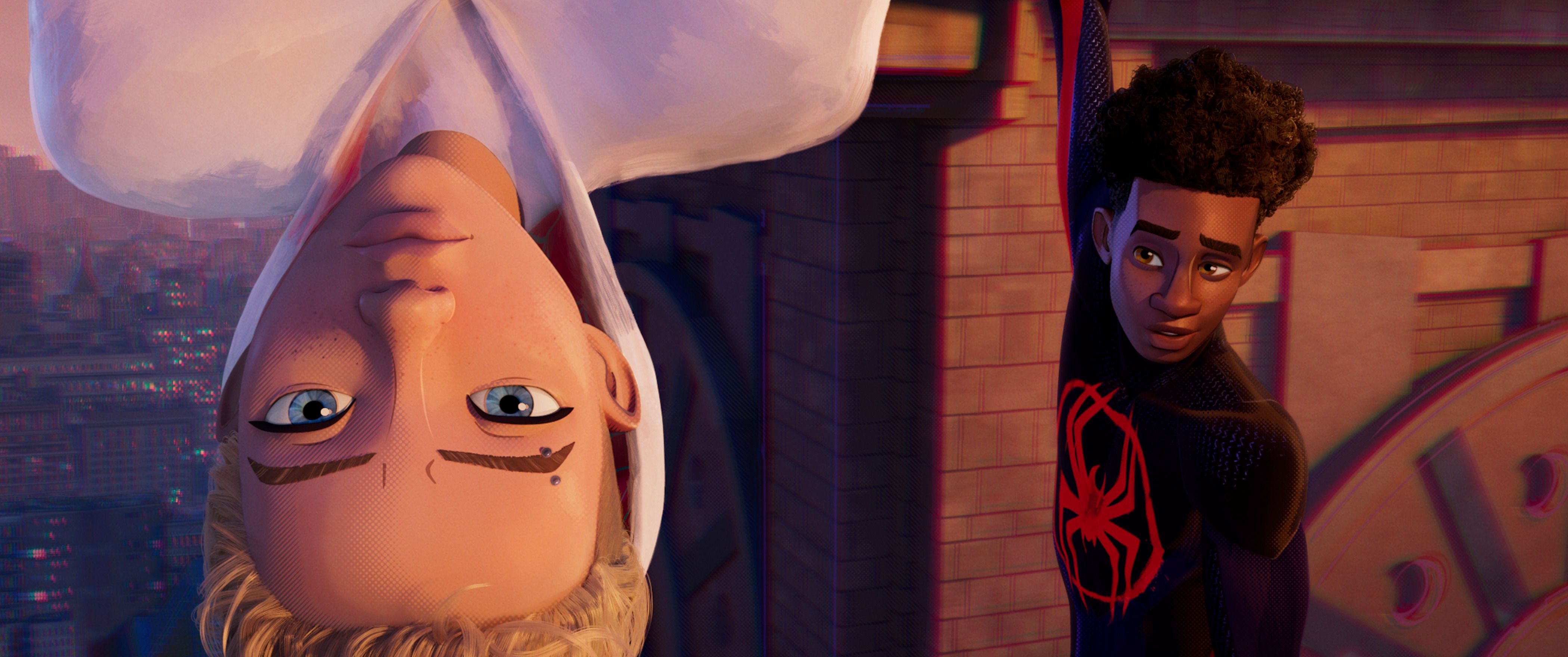Though the year is still young, it is hard to think of a work of studio animation whose visual presentation will feel as genuinely exciting as the spectacular Spider-Man: Across the Spider-Verse. The work of directors Joaquim Dos Santos, Kemp Powers, and Justin K. Thompson and writers Phil Lord, Christopher Miller, and Dave Callaham as well as countless other talented animators, is really something special. Where many mainstream movies are utterly lacking in formal experimentation, this is a film that feels like it is doing everything it can to push back against stagnancy in beautiful and bold fashion. It is a sequel that has already cemented the still expanding series place as one of the greatest ever made, proving to be as inventive a blockbuster as you could hope to experience. Like the similarly magnificent Into the Spider-Verse before it, the film is a vibrant work that is absolutely bursting with creativity and care in a way that hasn’t been felt in the often tiresome superhero genre in some time.
Operating on a bigger canvas while still maintaining its depth of vision, it is something that also never loses sight of the equally dynamic character of Miles Morales (Shameik Moore) at its center. Where other recent incarnations of the wisecracking wall-crawler have buried him under an ensemble of MCU heroes from a broader universe or a narrative about facing down a lot of villains who end up making the movie too busy, this one is driven by a refreshing interest in grounding the spectacle in a robust character study. While there will be much ink spilled over the styles of animation on display (deservedly so as it really just comes alive with rich textures and kaleidoscopic bursts of color), the more emotional underpinnings that the film wrestles with recall one of the first cinematic takes on the character: Sam Raimi's original Spider-Man from 2002. Not only did it help to set a high bar for what we expect from these types of stories that few have been able to match, it has long remained the definitive take on the character for good reason. Raimi’s care for the character of Peter Parker (Tobey Maguire) underneath the mask he put on to become Spider-Man was infectious as he never forgot to make the necessary room for exploring the intricacies of his life outside of saving the world.
‘Across the Spider-Verse’ Brings the Same Passion For the Character As It Does the Animation
Though it sounds like this care should be a bare minimum for telling a compelling story, there were many subsequent entries that lost sight of this in favor of going bigger and throwing more at the screen until there was little sense of who its central character even was. In The Amazing Spider-Man, it was about bringing in an excess of different villains that just made the story into one that feels scattershot and shallow. In Marvel’s recent live-action take, Spider-Man was often reduced to being a sidekick to Iron Man and the Avengers. Each contains small merits, but neither feels like it was invested in this character as an individual. The incessant piling on of all the excess characters around them betrayed a lack of confidence in just swinging around with Spider-Man and getting to know his world. It is in this regard where Across the Spider-Verse stands apart, feeling most in conversation with Raimi’s original work. While their presentations could not be more different, they're united by a shared desire to get to the heart of the character and the world he's fighting to protect. Even as this one introduces countless more characters spanning multiple worlds, Miles is never lost in the shuffle.
When we had last left him in Into the Spider-Verse, he had managed to come into his own as a hero and saved the day. Though he was victorious, he has now discovered that life is not so easy when you’re trying to balance growing up and being Spider-Man at the same time. Some of this is classical hero stuff, as many of these stories are built around having secret identities and double lives, though Across the Spider-Verse stands out for how much it really reflects on what Miles is facing down. There is a profound sense of loneliness that is interwoven amidst the jokes he makes and the shenanigans he gets up to. He can’t talk to his parents who, while they are trying their best, are unaware of what he went through and the impact it has had on him. Everything from the revelation about what path he wants to take in college to the drawings he makes of Gwen (Hailee Steinfeld) lay this out. Every detail matters. It isn’t just a retread of what came before. Rather, it's a deepening of the character that is as humorous as it is heartfelt. Just like Raimi did with his film, it is the moments where he isn’t Spider-Man that are made absolutely central and provide an earned depth of emotion. It is a story in service of the character, not the other way around as many of the other films have fallen into being.
Miles Is Given Life in Moments Big and Small
Even just a conversation he has with his loving mother Rio (Luna Lauren Velez) overlooking their city or a flash of uncertainty before he decides to follow Gwen far away from home carries with it more meaning than most of those aforementioned missteps do combined. In particular, the moment midway through that mirrors the leap of faith from the first film proves to be more than just a callback. Instead, it is grounded in Miles proclaiming that he is going to write his own story rather than just follow in the set path that has dictated the journey of all who have come before him. It serves as the film’s thematic turning point that carries with it the same emotional punch as when Raimi would show Peter starting down his own path.
Both characters are far richer and subsequently carry more of an impact because of that investment in building them up. Though there are references to some of the other films in Across the Spider-Verse, the brief glimpse we get of Raimi’s world from more than two decades prior is the one that is most fitting for a reason. Where other attempts to take on this character have fallen far short, this is one that leaps high into the sky and ensures that there is a real interest in following Miles wherever he is going next. This is not just because of the adventures to be found, but because of the person himself who is going on them.
Spider-Man: Into the Spider-Verse is in theaters now.



